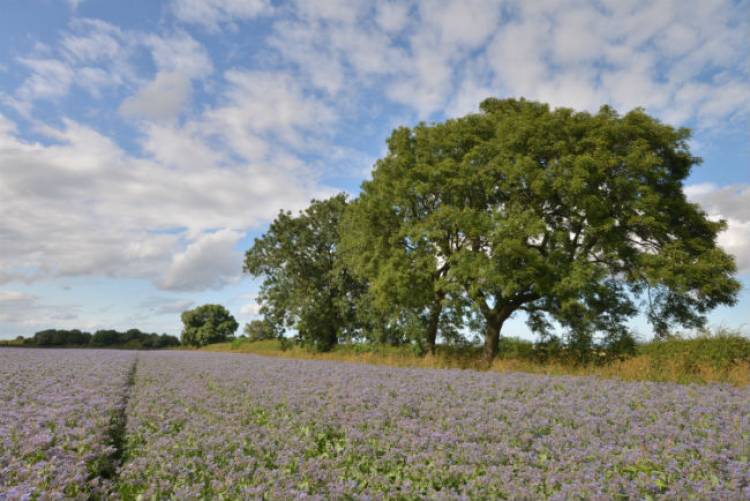Bees meet Borage

Our beautiful borage really is a distracting sight at this time of year. After the abundance of yellow from the Rapeseed across the Wolds in May, at this time of year, just as harvest is getting underway, the vivid purple-blue flowers really stand out amongst the sandy gold fields of ripe wheat and barley and the dark green of potato crops.
As followers of our blog will know, the population count at our farm on the Wolds increases somewhat over the summer months as we welcome a city’s worth of bees in clusters of hives to pollinate the plants.
Bees are absolutely critical in the growing of borage. Although we have lots bumble bees and other pollinating insects coming to the crop they need thousands of honey bee helpers to ensure the job is done. If there are no insects to pollinate the starflowers, no seeds will be produced.
As part of growing the crop, it is necessary to find approximately one to two hives per acre of borage to help with this process so each year, Dad calls round his beekeeper contacts to find out who can bring hives to us. Luckily, borage crops are a fairly sought-after location for beekeepers due to fact that it is such a good nectar producing plant resulting in delicately flavoured, clear, runny honey!
We grew borage for consecutive years in the late 90s and early 2000s, as did many other Yorkshire farmers, and the patchwork fields of purple-blue flowers were a sight to behold across the Yorkshire Wolds at that time.
As part of the economic downturn and changing global markets, it became difficult for some years to get a contract again to grow the crop, so we’ve been delighted to have borage again on our Wolds land for the third year in a row. Having yesterday just done the 2016 cropping plan with our agronomist, next year’s borage contracts still remain uncertain so we have a beans vs borage decision still to be made as the break crop for some fields on our land that can only be made later in the year.
Borage is a crop that is grown for its seeds: these are used to make starflower oil, generally used as a dietary supplement as it contains a number of “good” fatty acids, although there are other uses too. The seeds are harvested then cleaned and crushed so that the oil is released. You’ll see little bottles of the stuff, often in capsules, in your local health food shop.
Borage can be tricky to grow, and harvest, but we really feel it adds something a little bit different to our farm and we continue to enjoy growing it and relish its brilliance through these delightful flowering weeks.
Zoe









